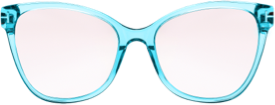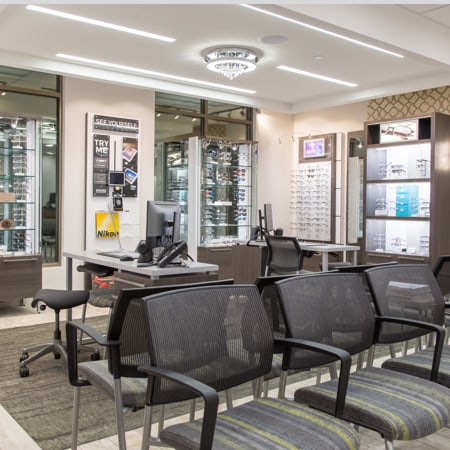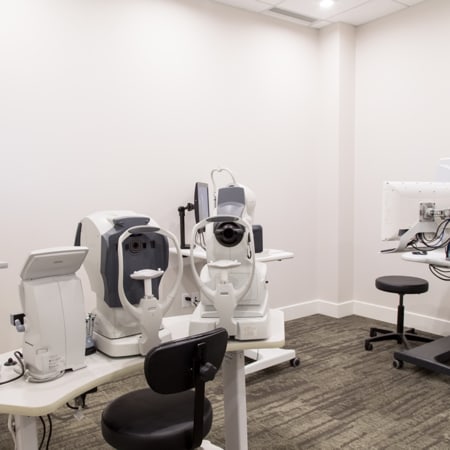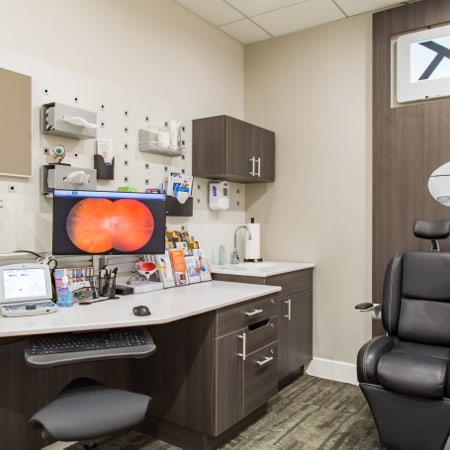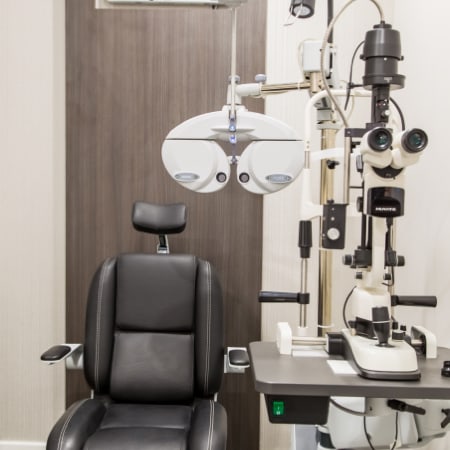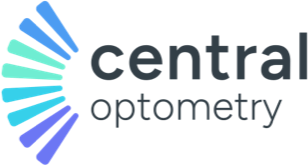When people think of vision problems, they often think of the common refractive errors affecting focus, but other less known conditions can affect vision quality too. This includes binocular vision dysfunction (BVD), and digital eye strain.
These ocular concerns can be corrected with tools like visual therapy or blue light eyeglass coatings. NeuroLens is a specialized lens technology that helps address the root cause of BVD and digital eye strain. Microprism technology in the lenses subtly directs the eyes back into alignment.
What is Eye Misalignment?
Humans have binocular vision, meaning we have 2 eyes that are meant to work together. Each eye holds slightly different information. In an individual with healthy binocular vision, the brain uses this different information to perceive distances and coordinate eye movement.
Misalignment with binocular vision is called binocular vision dysfunction (BVD) and occurs when the eyes and brain are unable to work effectively as a team. This results in our brain working harder to interpret visual information and can lead to vision problems such as poor depth perception, eye coordination, and focusing ability.
Individuals with BVD may experience symptoms like:
- Eye strain and eye pain
- Dizziness
- Headaches
- Neck and shoulder pain
- Double vision and blurry vision
BVD can lead to difficulty reading, driving, using digital devices, or difficulty concentrating for extended periods.
Digital Eye Strain
In our digital age, screen time and computer use are at an all-time high, and digital eye strain is becoming all the more common. Digital eye strain can cause symptoms that are similar to BVD like:
- Eye strain
- Dry eyes
- Blurry vision
- Double vision
- Headaches
- Neck pain
Focusing on objects like computers or phone screens requires our eye muscles to continuously adjust and maintain focus. The distances and angles at which we view screens also differ from regular reading or writing tasks, putting additional strain on our eyes.
Prolonged screen time without frequent breaks fatigues our eye muscles and causes eye strain. This causes our eyes to work harder which can lead to vision-related symptoms. Individuals with BVD may notice their symptoms worsen with frequent and prolonged screen time because the eyes are working hard to stay aligned and focused on digital screens.
Prescription glasses or contacts may not relieve symptoms of digital eye strain because traditional lenses aren’t designed for computer use. NeuroLens can help to relieve digital eye strain and discomfort from eye misalignment.
What is NeuroLens & How Does it Work?
When the eyes are not functioning together as they should, the misalignment can cause the muscles to strain.
NeuroLens is an eyeglass lens designed to address misalignment of the eyes which can stem from prolonged nearsighted work and computer use, even in individuals with 20/20 vision.
NeuroLenses can correct for refractive errors in addition to binocular vision. These lenses incorporate a vision prescription and contoured prism to effectively align the eyes and prevent eye muscles from overworking and straining.
To correct eye misalignment that may be caused by BVD or digital eye strain, NeuroLenses uses microprism technology to direct the eyes into alignment. The prims in the lenses help redirect how light enters the eyes, making it easier for your eyes to work together and alleviate any eye strain. NeuroLenses can be paired with blue light filters to offer additional protection from digital eye strain.
NeuroLenses are customized to a patient’s visual needs. In addition to refractive corrections, the contoured prism lenses are developed based on an individual’s specific eye alignment measurements.
NeuroLens address the root cause of eye misalignment to relieve eye strain and prevent muscles from overworking, encouraging natural vision function and comfort.

Who is a Good Candidate for NeuroLenses?
NeuroLens addresses the root cause of eye misalignment to relieve digital eye strain. Their lens design can incorporate both a vision prescription and a contoured prism allowing many individuals to benefit from this lens technology.
Even individuals who don’t require vision correction can benefit from NeuroLenses. By improving the brain’s processing of visual stimuli, these lenses can enhance overall visual comfort for individuals who require no visual prescription but experience digital eye strain.
Not everyone who experiences digital device-related symptoms needs NeuroLenses. Candidates for NeuroLens often exhibit the following:
- Headaches after computer usage
- Neck pain or stiffness
- Intermittent blurry vision
- Trouble concentrating
- Motion sickness
Visiting your optometrist for a routine comprehensive exam is the first step in determining whether NeuroLens is right for you. Your optometrist will be able to assess for eye misalignment and discuss the extent of your symptoms of BVD or digital eye strain.
Your optometrist will measure the degree of eye misalignment using a specialized device, the N3. The N3 looks like a virtual reality headset. It’s designed to take a fast and accurate measure of eye misalignment and prism diopter.
These measurements, alongside any vision prescription, are used to create your customized NeuroLens glasses.
What are the Benefits of NeuroLens?
There are many benefits to NeuroLenses. They provide relief from symptoms of BVD and digital eye strain and help improve vision quality in everyday life. Some of the advantages include:
- Relief of chronic symptoms related to digital device use
- Can reduce the need for excessive repositioning of screens or workplaces
- Can be combined with other vision correction methods
- Custom-fit to individual needs
- After the adjustment period, 90% of users notice an improvement in their symptoms
While there are no long-term side effects or risks to using NeuroLense, there are a few things individuals should be aware of:
- Minor disorientation during the adjustment period as your eyes adapt to the new prism correction.
- Not everyone will experience complete relief of symptoms.
For many, the advantages far outweigh the potential drawbacks. But it’s important to discuss these with your eye care provider when considering NeuroLens as a treatment option.
Schedule a Consult!
NeuroLens provides a low-risk, noninvasive option for addressing the root cause of eye misalignment.
It’s important to consult your optometrist to determine whether NeuroLens is right for your visual needs. Contact our team to schedule a comprehensive eye exam and begin your journey with NeuroLens!




